The Apollo Chorus performed Joby Talbot's Everest a few weeks ago, and to prepare for the opera I read Jon Krakauer's Into Thin Air. (The opera is based on the events described in that book.) I concluded that climbing Mt Everest is insane.
That didn't stop about 100 climbers from attempting to summit on May 23rd of this year, contributing to one of the deadliest days in the mountain's history:
[T]wo decades on, the Everest experience often seems to have devolved even further into a circus-like pageant of stunts and self-promotion. In April 2017, DJ Paul Oakenfold outraged mountaineering purists by hosting an EDM concert at the base camp in Nepal; this year three Indian climbers returned home to celebratory crowds after they supposedly summited on May 26, only to be accused of fraud after other mountaineers claimed that they never made it past 23,500 feet.
And then there are the growing crowds. For this year's climbing season, Nepal handed out 381 permits to scale Everest, the most ever. The Chinese government distributed more than 100 permits for the northern side. According to the Himalayan Database, the number of people summiting Everest has just about doubled in the past decade. And in that time the mountain has become accessible even to relative novices, thanks to a proliferation of cut-rate agencies that require little proof of technical skill, experience, or physical fitness. “Some of these companies don't ask any questions,” says Rolfe Oostra, an Australian mountaineer and a founder of France-based 360 Expeditions, which sent four clients to the summit this year. “They are willing to take anybody on, and that compounds the problems for everyone.”

On May 22—the day before Grubhofer reached the top—a long line near the summit had already begun to form. One of those pinned in the throng was a Nepali climber named Nirmal Purja. That morning, Purja snapped a photo of the chaos. The picture showed a near unprecedented traffic jam on the popular southern side: a column of hundreds of climbers snaking along the knifelike summit ridge toward the Hillary Step, the last obstacle before the top, packed jacket-to-jacket as if they were queued up for a ski lift in Vail. The image rocketed around the world and, as the events on the mountain were still developing, raised an urgent question: What the hell is going on atop Mount Everest?
I still think these people are crazy. If I ever see Mt Everest, it will be from the pressurized cabin of a transport-class airplane. I'm fine with that.
I will, however, see the opera again when it comes to the Barbican on June 20th.
The New York Times Canada Letter today lead with a story about how local regulation in Montreal threatens a culinary tradition:
[Irwin Shlafman and Joe Morena] are competitors in the business of Montreal bagels, which have a distinctive flavor from being boiled in honey-infused water before being baked in a wood-burning oven.
These days, however, Mr. Shlafman and Mr. Morena are united against a common threat — environmentalists who want to abolish the pollutant-producing ovens where the bagels are made.
The battle heated up late last year when rumors began to circulate that a City Hall official was planning to ban the ovens, which emit fine particles that can aggravate respiratory ailments like asthma. Angry neighbors had complained to the city and some were boycotting the vaunted bagel shops.
Coming to the defense of the bagels were fans who treasure the carb-heavy snack as an essential part of the city’s Jewish history and social fabric.
Montreal bagels have become a global culinary emblem of the city, alongside smoked meat and poutine, and are doughy unifiers in a majority French-speaking province buffeted by identity politics.
Next time I'm in Montreal I hope to try these wood-fired bagels. If they're still available.
As I try to understand why a 3rd-party API accepts one JSON document but not another, nearly-identical one, who could fault me for taking a short break?
Back to JSON and my miserable cold.
I came across this photo of the Aragon Ballroom from 1956:
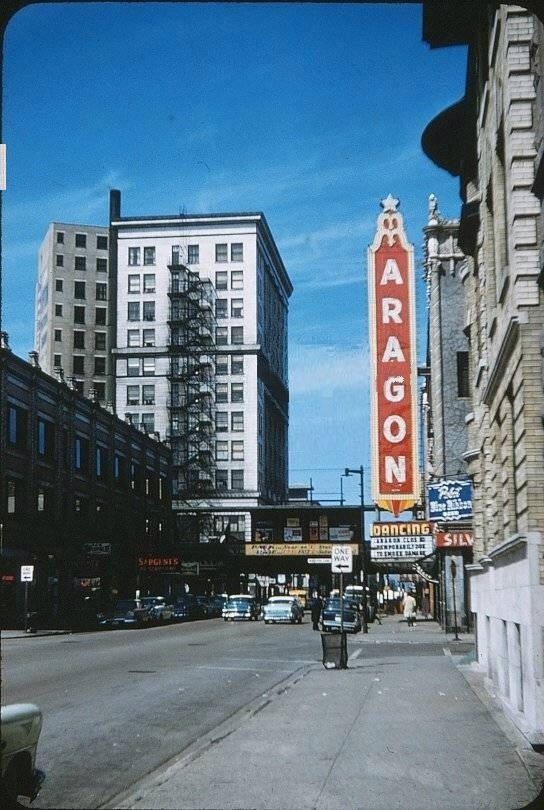
Here's the same location about half an hour ago:
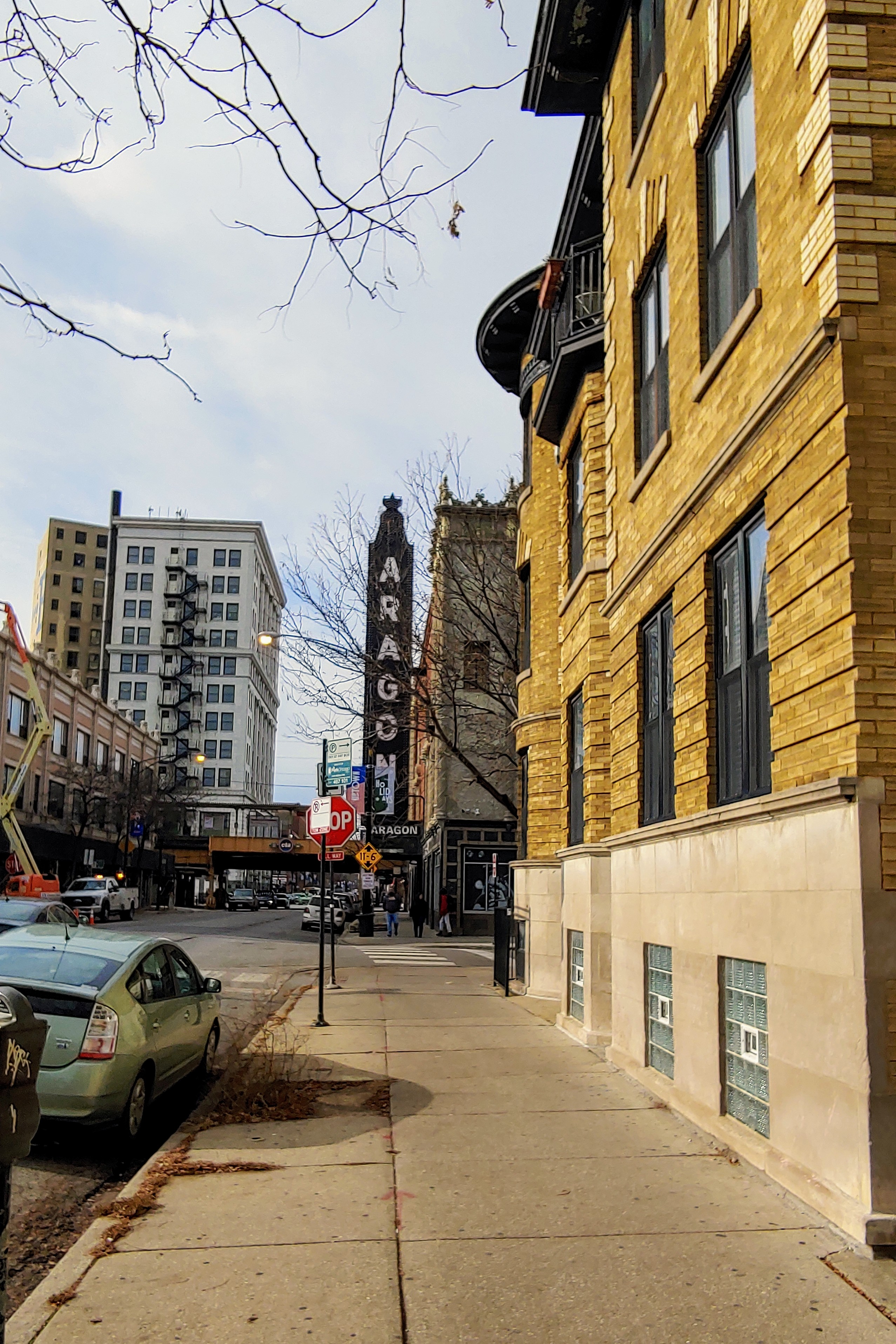
I may have to re-shoot this with a longer lens and from farther back. It's interesting how little has changed though.
Driving to Kirtland, Ohio, and back this weekend used 63.2 liters, at an average efficiency of 5.1 L/100 km. Not bad, but not great, due to a pretty stiff headwind today. But I think I may have filled my car for the last time in 2019.
Also, I didn't have time to blog.
Some photos from London. Last night, South Kensington:
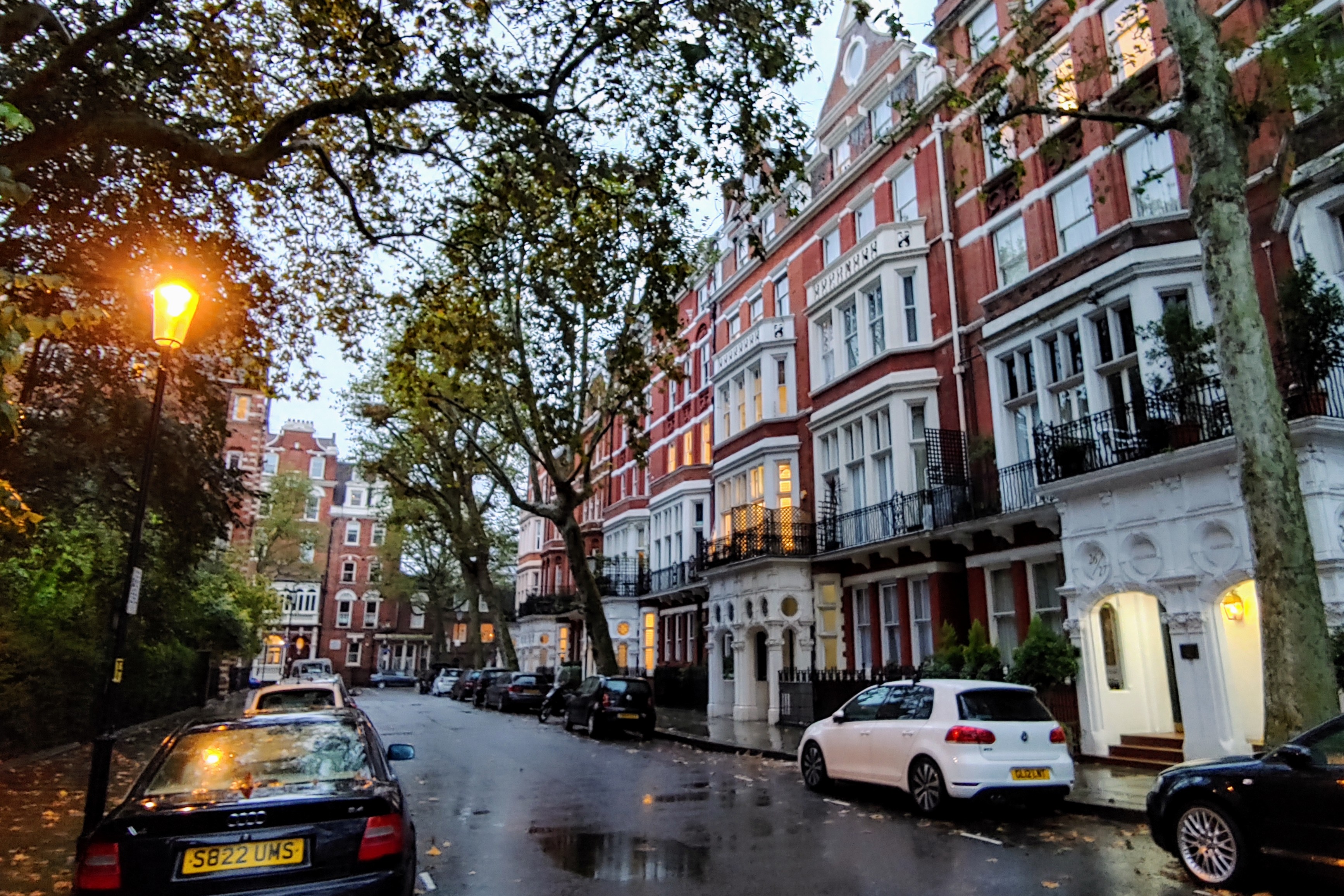
Early this afternoon, Earls Court:
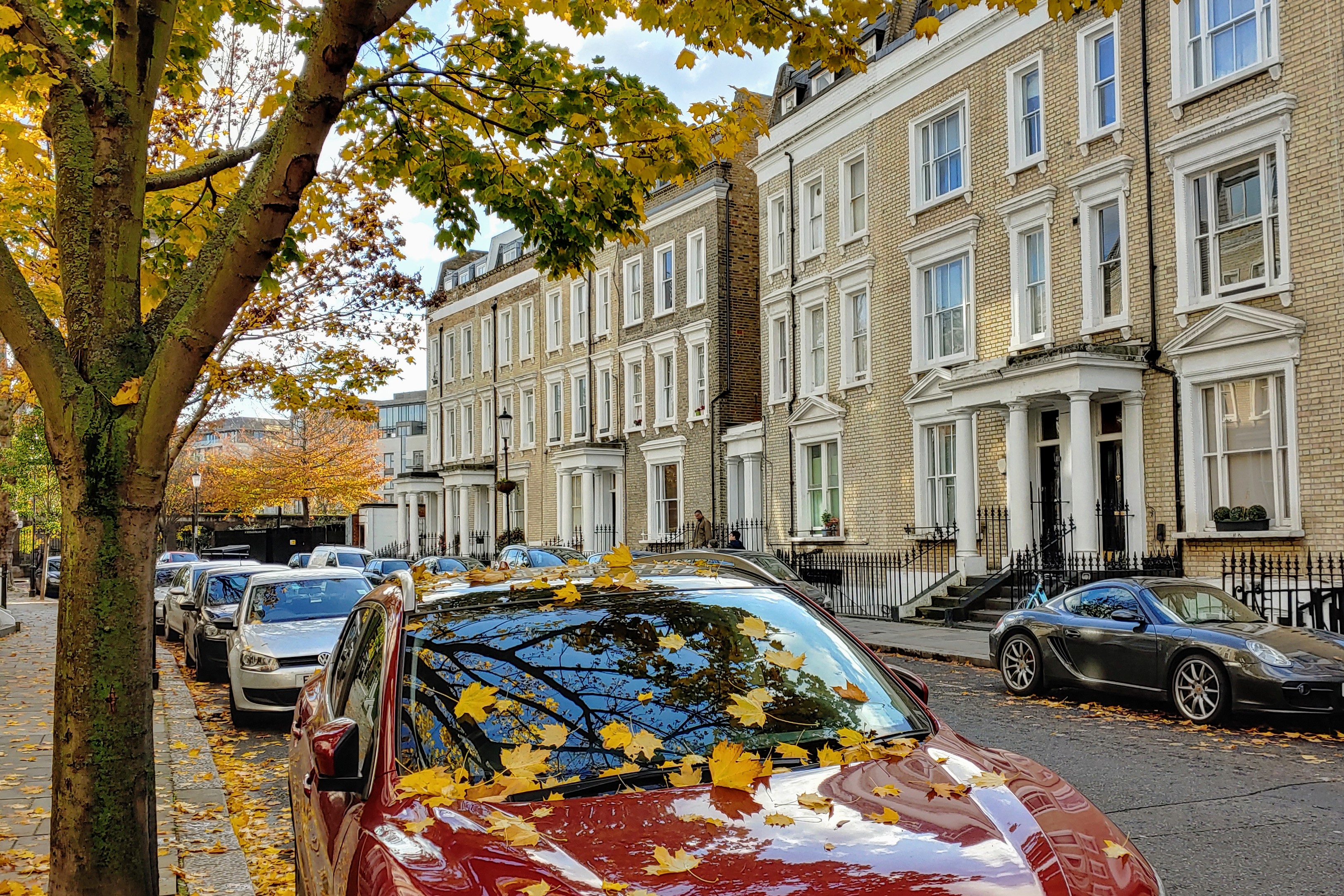
Later, the Grand Canal at Kentish Town Road:
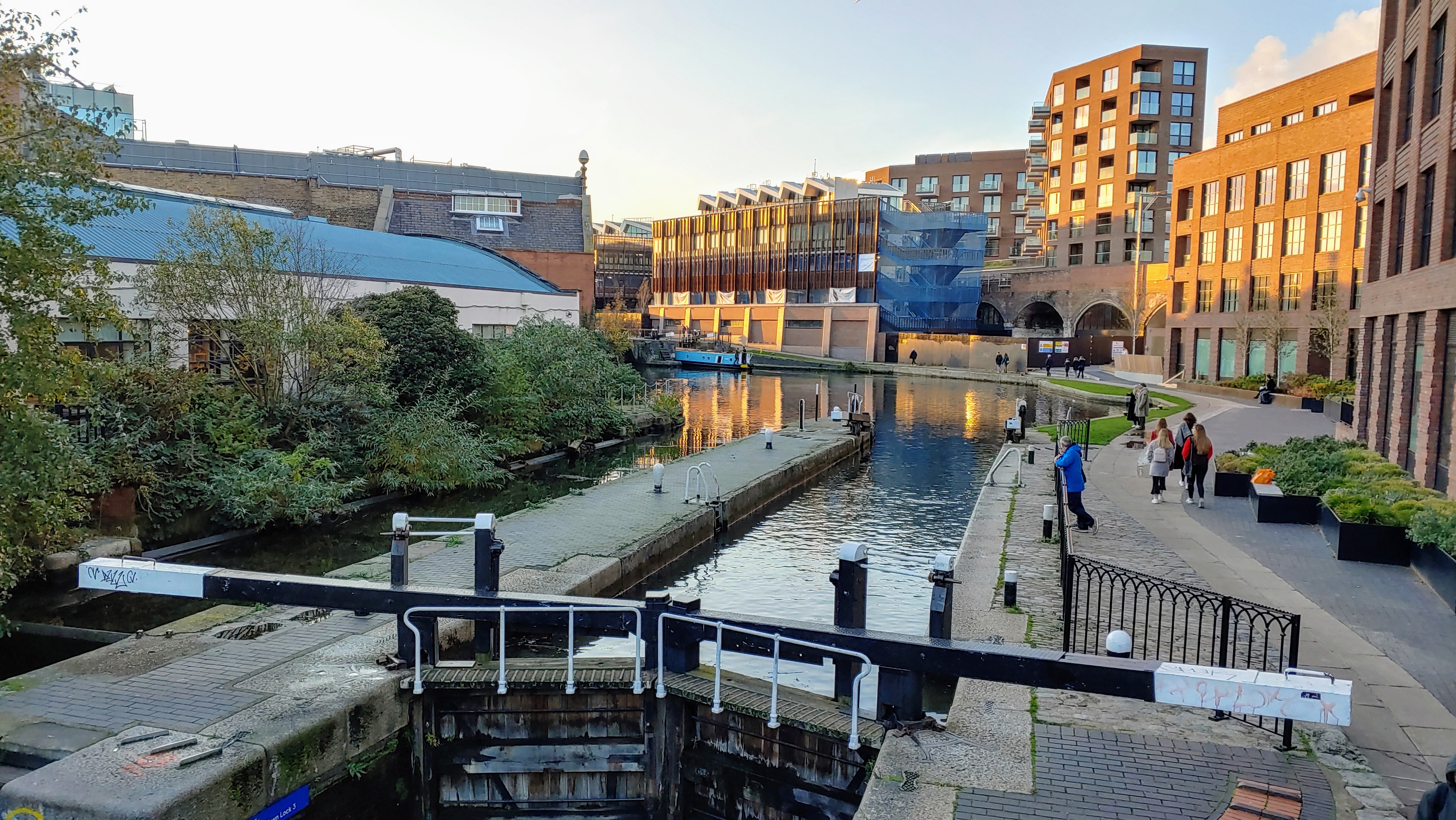
Today's crop of articles:
And now, back to coding.
I realized this morning that I've missed almost the entire season of The Good Place because I don't seem to have enough time to watch TV. I also don't have enough time until Friday to read all of these pieces that have crossed my desk only today:
And now, I must finish correlating two analyses of 1.48 million data points using similar but not identical algorithms. It's as much fun as it sounds.
Chicago has the world's 6th busiest airport, with hundreds of thousands of aviation operations every year. Naturally the people who live nearby get an earful. I live about 16 km east of the approach end of runway 28C, the preferred landing runway from destinations south and west of Chicago. Even though the planes are about 4,000 feet up when they cross the lakefront, I can still hear them well enough to tell them apart by sound. (No machine in the world sounds like a 747, I assure you.)
Starting today, the airport will use a rotating arrangement of landing and departing runways for nighttime operations (10pm to 7am). Despite its name, the "interim fly quiet" plan won't actually reduce aggregate noise emissions. It'll just spread them around more evenly:
Currently, O’Hare uses just the parallel, east-west runways at night. The so-called “Interim Fly Quiet” plan will mix in diagonal runways, so an east-west runway will be used one week, then a diagonal runway the next, then back to east-west, with adjustments made depending on weather and other factors.
It will mean more noise for suburbs like Des Plaines, to the northwest of the airport, while areas more directly east or west, such as Bensenville and some North Side Chicago neighborhoods, will get less.
Note that this only applies to nighttime operations, when planes land about every 10 minutes. During peak hours, O'Hare brings them in on two parallel runways at 90-second intervals. When runway 9C/27C opens soon, it will be possible for O'Hare to land one plane a minute on 3 parallel runways.
While my work computer chews through slightly more than a million calculations in a unit test (which I don't run in CI, in case you (a) were wondering and (b) know what that means), I have a moment to catch up:
- Boris Johnson has asked MPs to dissolve Parliament on Monday, which, if 2/3 of Commons agrees, means there would be an election on December 12th. The EU will vote tomorrow on whether to accept the UK's Brexit extension request, which is the Labour Party's condition for agreeing to new elections.
- Education Secretary Betsy DeVos, in a good position to win the award for Worst Cabinet Secretary of 2019, may end up costing President Trump re-election (beyond what he's doing to ensure a Democratic victory). It turns out people in Michigan do not want their tax money to go to private education companies like hers. The cherry on top of that is she might actually go to jail in the next few days.
- Josh Marshall argues that the goal of the interrupted-by-being-arrested-at-the-airport plan of Rudy Giuliani's friends might have been simply to get Ukrainian president Volodymyr Zelensky to go on TV and say Ukraine was opening an investigation into Hunter Biden. Just having a head of state say that could tank the Biden nomination on its own, even if everyone knows there really is nothing to see.
- A group of 30 Republican House members burst into a Sensitive Compartmented Information Facility (SCIF) in the Capitol building yesterday to hold up the testimony of Deputy Assistant Defense Secretary Laura Cooper. Ordinarily, if you violate a SCIF, the intelligence services quickly remove your security clearance. I wonder if that'll be the case here.
- With Lake Michigan water levels consistently over 100 cm above average this year, the city will need billions of dollars to prevent and correct significant erosion of the shoreline.
- Finally, scientists have taught rats how to drive little cars. Seriously. It's adorable.
The first 30-minute calculation is done, and now I'm on to the second one. Then I can resume writing software instead of testing it.